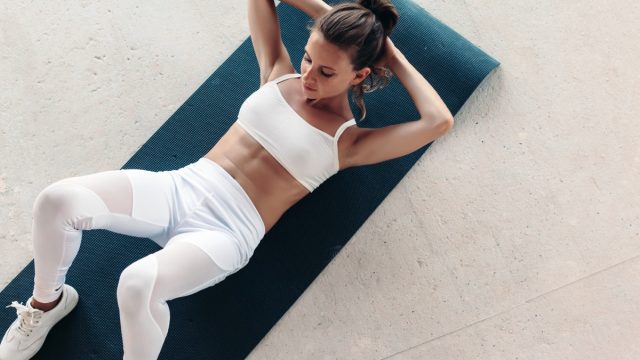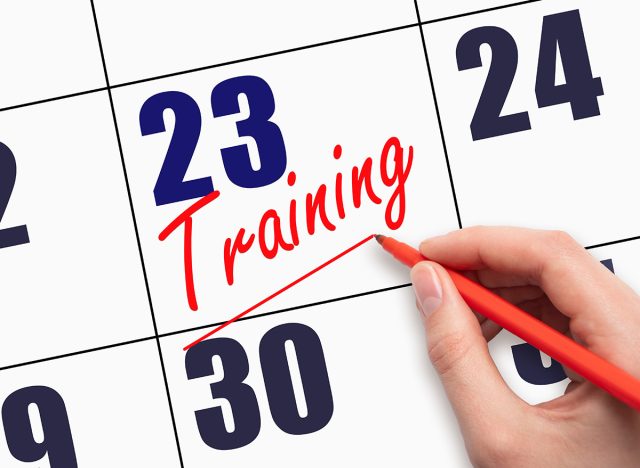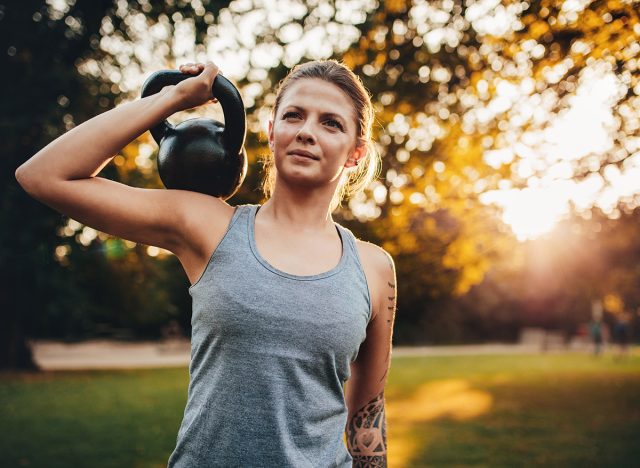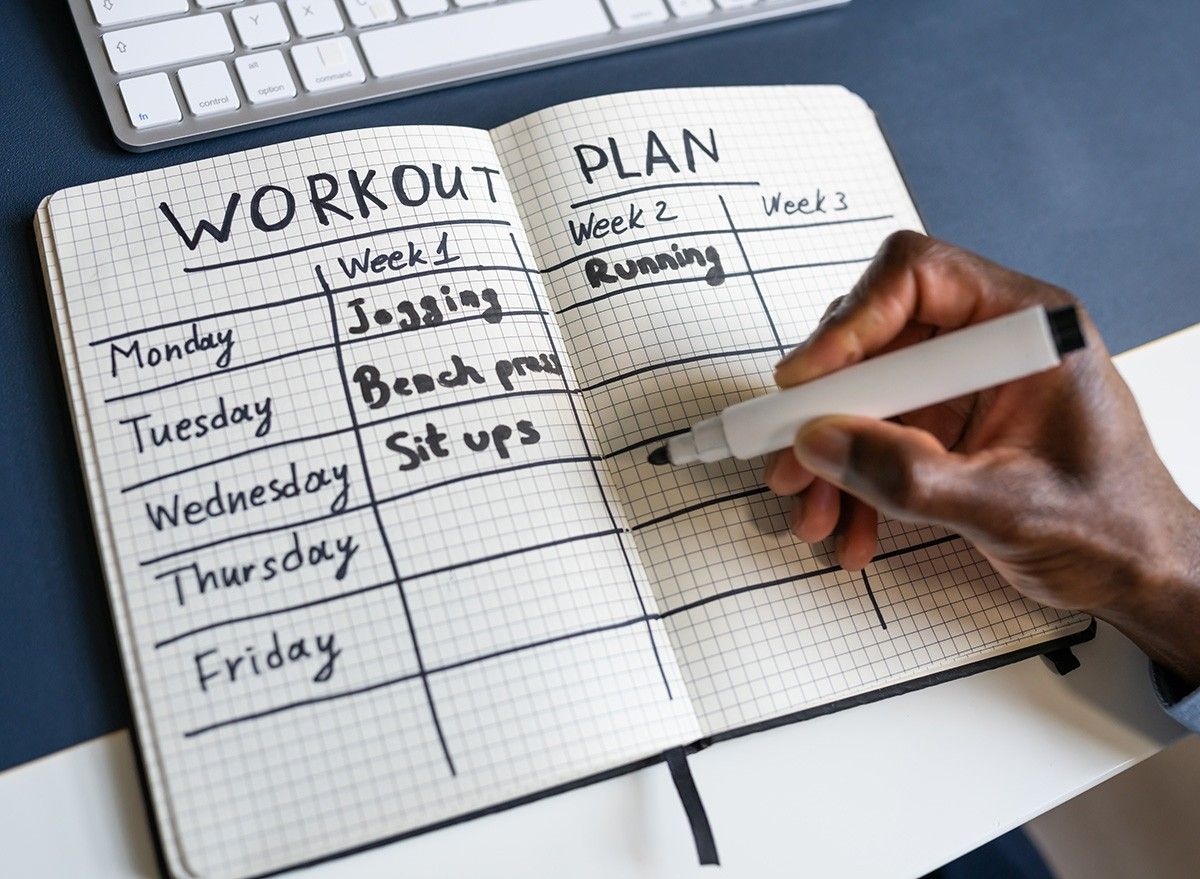5 Secrets to Getting in Your Best Shape Ever, by a Fitness Coach

As the Founder and Head of Lifestyle at Alta Coaching, an online fitness and nutrition program for busy professionals, I know the best thing to do to get in the best shape ever is have a plan. First, you need to make a plan for when to exercise. Then, you need to make a plan for how to exercise. Read on to discover how exactly to execute both—and what not to do—so you can get into your best shape.
When to Exercise

One strategy that works well is to pick one day each week to block off time on your calendar for the upcoming week. Friday or Sunday usually work best. Although it sounds simple, having exercise blocks on your calendar helps keep you accountable. Blocking your calendar also helps prevent other people from scheduling over that time. If you try to fit it in exercise when you can, you are letting other people have a say in your own health. The most important factor in a successful fitness routine is consistency, so if you can block off time every week you will improve your fitness. (In addition to my multiple certifications in fitness and nutrition, I was able to get into the best shape of my life much later in life when I was a busy parent. It's never too late to get in shape and I love helping other people do the same. I was not a college athlete and I know what it's like to be intimidated walking into a gym. )
How to Use That Time Wisely

Once you have that time blocked off, the next step is to use it wisely. Avoid just walking into a gym and wandering around picking up random equipment. Or if you're working out at home, avoid just scrolling through YouTube or Instagram and seeing what workout comes up that might be a fit. Instead, try to adhere to a structured program that lasts for 8-12 weeks. This will keep you on track for one specific goal and avoid wasting time. If your goal is to lose weight, find a program that prioritizes burning calories and includes some element of resistance training. If your goal is to build muscle, find a plan that will prioritize progressive overload week over week so you can make progress every time you walk into the gym or exercise at home.
RELATED: 10 Foods That Grow Muscle Fast
Warm Up

One common mistake is not warming up. If you remember life before smartphones, you're too old to skip the warmup! A proper warmup only takes a few minutes and it sets you up for better progress, prevents injury, and can help activate underused muscles such as your glutes or mid-back so they're recruited properly when exercising. The best warmup is a 5 minute dynamic warmup, which is similar to a yoga flow. It involves moving all parts of your body in all different directions so your joints and muscles are prepared for exercise. For example: a downward dog into a pushup, followed by side planks, followed by mountain climbers, high knees, high kicks, arm circles, and hugging yourself. Feel free to have fun with this.
Don't Train Until Absolute Failure

Another common mistake to avoid is training until absolute failure. Squeezing out one last rep increases your risk of injury or developing more muscle imbalances. This action can recruit the wrong muscles to help push out that last rep. Instead, focus on good form and going to 1-2 reps less than failure. This allows you to recover faster, avoid injury, and build proper muscle balance which improves long-term health. Nothing kills your consistency more than having an injury.
RELATED: What Happens When You Quit Soda, According to a Nutritionist
Stick to the Plan

The third common mistake is worrying about variety. Sometimes, sticking to the same 10-15 exercises each week is the best place to start. This allows you to complete your workout quickly and best measure your progress week over week. If you constantly change your movements, you may forget how much weight you did the week before or get intimidated and confused. Variety is something to introduce down the road once you've nailed your routine consistently.
It's Never Too Late!
There was a study done in Sweden looking at the fitness level of people in their 80s. The people in their 80s who had been cross-country skiing consistently over several decades had incredible cardiovascular and bone strength. They had the same oxygen output as healthy males in their early 20s. Someone in their 80s as fit as someone in their 20s! The people in their 80s who were not consistently skiing could not live alone and were in much poorer health overall. This is just one study that shows it's not too late to start and you can still be as healthy or healthier than someone in their 20s as long as you are consistent. The secret to being healthy at any age is to keep moving and you'll never stop. If you enjoyed this article, don't miss 6 Disgusting Things Drinking Soda Does to Your Body.
Andrew Hayes is the Founder & Head of Lifestyle at Alta Coaching.




